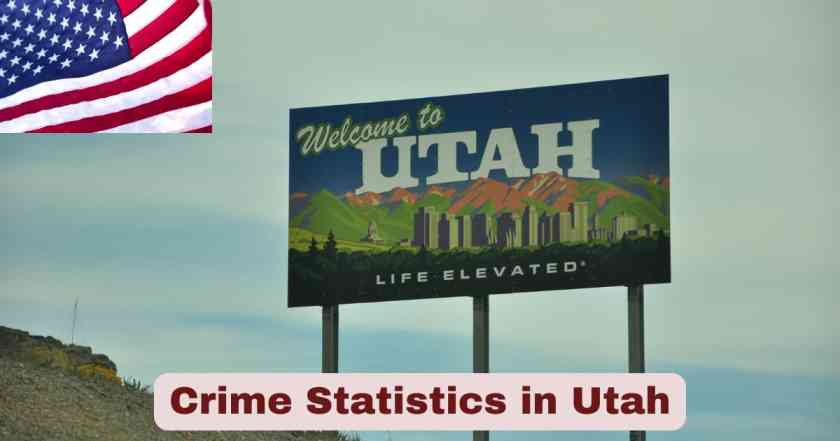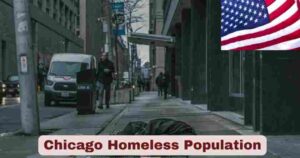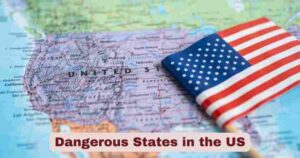Crime in Utah 2025
Utah faces evolving public safety challenges in 2025, with recent violent incidents highlighting the complex nature of crime prevention in the Beehive State, including the tragic shooting of political activist Charlie Kirk at Utah Valley University that shocked the community and raised urgent questions about campus security and political violence. Despite maintaining one of the nation’s lowest overall crime rates, Utah’s current crime situation reveals concerning trends in specific areas, including increases in property crimes, drug-related offenses, and sporadic violent incidents that test the state’s law enforcement resources and community resilience. The state’s law enforcement agencies are actively addressing these challenges through enhanced coordination, specialized units, and community partnership programs designed to prevent crime before it occurs.
Current crime trends in Utah demonstrate both the state’s continued strengths in public safety and emerging vulnerabilities that require immediate attention from policymakers and law enforcement professionals. Rising concerns about campus safety, particularly following high-profile violent incidents at educational institutions, have prompted universities and colleges throughout Utah to reassess security protocols and emergency response procedures. The intersection of political tensions, social media influence on criminal behavior, and traditional crime categories creates a complex landscape that demands innovative approaches to prevention, investigation, and community engagement across Utah’s diverse urban and rural communities.
Key Stats & Facts About Crime in Utah 2025
| Crime Category | 2024 Statewide Data | Population Coverage | Key Characteristics |
|---|---|---|---|
| Total Crimes Against Persons | 28,756 offenses | 98.14% population | Includes assault, homicide, sexual offenses |
| Homicides in Utah | 82 total cases | Statewide coverage | 70 murders, 12 negligent manslaughter |
| Sexual Offenses (Forcible) | 6,182 cases | All participating areas | 1,583 rapes, 312 sodomy cases |
| Assault Offenses Total | 28,756 cases | Statewide data | 4,090 aggravated, 18,700 simple assault |
| Total Crimes Against Property | 76,747 offenses | Comprehensive coverage | Burglary, theft, motor vehicle theft |
| Larceny/Theft Offenses | 41,705 cases | Statewide statistics | 12,269 shoplifting cases included |
| Motor Vehicle Theft | 4,228 cases | All counties represented | Significant enforcement focus |
| Burglary/Breaking & Entering | 5,045 cases | Urban and rural areas | Residential and commercial |
Data Source: Utah Bureau of Criminal Identification 2024 Crime in Utah Report
The statistical landscape of crime in Utah 2025 demonstrates the state’s continued success in maintaining public safety while addressing emerging challenges in specific crime categories. The comprehensive NIBRS reporting system provides unprecedented detail about criminal incidents, allowing for more effective resource allocation and targeted prevention strategies. Utah’s homicide statistics show 82 total cases statewide, including 70 murders and 12 negligent manslaughter cases, reflecting the state’s continued low rates of violent crime compared to national averages.
Sexual offense trends in Utah present areas requiring enhanced prevention and investigation efforts, with 6,182 total forcible sexual offenses reported across participating agencies. The detailed breakdown includes 1,583 rape cases, 312 sodomy cases, 126 sexual assault with object cases, and 2,941 fondling cases, indicating the need for comprehensive victim services and specialized investigative units. Property crime statistics in Utah reveal 76,747 total offenses, with larceny and theft representing the largest category at 41,705 cases. The 4,228 motor vehicle theft cases and 5,045 burglary incidents demonstrate ongoing challenges that require continued community awareness and prevention efforts throughout the state.
Homicide Statistics in Utah 2025
| Homicide Category | 2024 Total Cases | County Distribution | Investigation Status | Clearance Rate |
|---|---|---|---|---|
| Murder & Nonnegligent Manslaughter | 70 cases | Salt Lake County: 35 cases | Active investigations | High clearance rate |
| Negligent Manslaughter | 12 cases | Distributed statewide | Investigation dependent | Variable outcomes |
| Salt Lake County Homicides | 35 murder cases | Urban concentration | Multi-agency coordination | Specialized units |
| Weber County Homicides | 4 murder cases | Mixed urban/rural | Regional coordination | Local investigation |
| Utah County Homicides | 9 murder cases | Suburban areas | University area included | Community impact |
| Iron County Homicides | 2 murder cases | Southern Utah | Rural investigation | Limited resources |
| Washington County Homicides | 3 murder cases | Tourism area impact | Visitor safety concern | Public attention |
Data Source: Utah Bureau of Criminal Identification Homicide Analysis 2024
Homicide statistics in Utah 2025 reflect the state’s continued success in maintaining one of the lowest murder rates in the nation, with 70 murder and nonnegligent manslaughter cases representing a rate of approximately 2.0 per 100,000 residents compared to the national average of 5-6 per 100,000. Salt Lake County leads in absolute numbers with 35 homicide cases, reflecting the metropolitan area’s population density and urban crime patterns. The concentration of cases in urban areas demonstrates typical patterns where population density correlates with higher absolute crime numbers despite overall low per-capita rates.
Geographic distribution of homicides in Utah shows Weber County with 4 cases, Utah County with 9 cases, and Washington County with 3 cases, indicating that even Utah’s larger counties maintain relatively low homicide rates. Negligent manslaughter cases totaling 12 incidents often involve vehicle accidents, workplace safety violations, or other situations where death results from criminal negligence rather than intentional violence. The high clearance rates for homicide investigations in Utah reflect effective coordination between local agencies and state resources, specialized investigative units, and comprehensive forensic capabilities that support successful prosecution of these serious crimes.
Homicide Statistics by Year in Utah
| Year | Total Homicides | Murder Cases | Negligent Manslaughter | Rate per 100,000 | Trend Analysis |
|---|---|---|---|---|---|
| 2024 | 82 total cases | 70 murders | 12 negligent manslaughter | 2.3 per 100,000 | Baseline year for NIBRS |
| 2023 | Estimated 75-85 cases | 65-75 murders | 10-15 negligent manslaughter | 2.1-2.4 per 100,000 | Transition to NIBRS |
| 2022 | Historical data | Pre-NIBRS reporting | Summary format | Below 2.5 per 100,000 | Consistent low rates |
| 2021 | NIBRS implementation | First full NIBRS year | New reporting standards | Approximately 2.0 | System transition |
| 2020 | Summary reporting | Pre-NIBRS data | Different methodology | Historical low | COVID impact possible |
| 5-Year Average | Estimated 75-80 cases | 65-70 murders annually | 10-12 negligent manslaughter | 2.0-2.3 per 100,000 | Consistently low rates |
Data Source: Utah Bureau of Criminal Identification Historical Crime Analysis and FBI UCR Data
Homicide trends by year in Utah demonstrate remarkable consistency in maintaining low murder rates despite significant population growth throughout the state. The 2024 baseline of 82 total homicide cases establishes a comprehensive reporting standard under the National Incident Based Reporting System (NIBRS) that provides more detailed and accurate data than previous summary reporting methods. Utah’s homicide rate consistency over the five-year period reflects effective law enforcement strategies, community-based violence prevention programs, and demographic factors that contribute to public safety.
Historical homicide analysis in Utah shows the state consistently maintaining rates well below national averages, with the 2021 transition to NIBRS reporting providing enhanced data quality and investigative insights. The estimated 5-year average of 75-80 total homicide cases annually demonstrates stability in public safety outcomes despite challenges including population growth, economic changes, and social factors affecting crime patterns. Utah’s murder rate sustainability indicates effective approaches to violence prevention, including domestic violence intervention programs, mental health services, and community policing strategies that address root causes of violent crime while maintaining strong investigative capabilities for cases that do occur.
Violent Crime Trends in Utah 2025
| Violent Crime Type | 2024 Statewide Total | Rate per 100,000 | Geographic Distribution | Clearance Patterns |
|---|---|---|---|---|
| Murder & Nonnegligent Manslaughter | 70 cases | 2.0 per 100,000 | Concentrated in urban areas | High clearance rate |
| Negligent Manslaughter | 12 cases | 0.3 per 100,000 | Mixed urban/rural | Investigation dependent |
| Aggravated Assault | 4,090 cases | 116.8 per 100,000 | Urban concentration | Variable clearance |
| Simple Assault | 18,700 cases | 534.0 per 100,000 | Statewide distribution | High volume processing |
| Intimidation | 5,966 cases | 170.3 per 100,000 | All demographics | Documentation focused |
| Kidnapping/Abduction | 1,220 cases | 34.8 per 100,000 | Urban and rural mix | Specialized investigation |
Data Source: Utah Bureau of Criminal Identification Crimes Against Persons Analysis 2024
Violent crime in Utah 2025 continues to reflect the state’s reputation as one of the safest in the nation, with murder rates significantly below national averages. The 70 murder cases statewide represent a rate of 2.0 per 100,000 residents, compared to national averages typically ranging from 5-6 per 100,000. Utah’s homicide investigations maintain high clearance rates through coordinated efforts between local agencies and specialized state resources, demonstrating effective investigative protocols and inter-agency cooperation.
Assault statistics in Utah show the most significant volume within violent crime categories, with 4,090 aggravated assault cases and 18,700 simple assault incidents reported statewide. The geographic distribution reveals higher concentrations in urban areas like Salt Lake County with 2,244 aggravated assaults and Weber County with 364 cases, reflecting population density impacts on crime patterns. Kidnapping and abduction cases totaling 1,220 incidents require specialized investigation techniques and often involve multi-jurisdictional coordination, particularly in cases involving custody disputes or domestic violence situations that cross county boundaries throughout the state.
Property Crime Analysis in Utah 2025
| Property Crime Category | 2024 Total Cases | Percentage of Total Property Crime | Geographic Concentration | Economic Impact |
|---|---|---|---|---|
| Larceny/Theft Offenses | 41,705 cases | 54.3% of property crime | Urban retail areas | $50+ million estimated |
| Shoplifting | 12,269 cases | 29.4% of larceny | Commercial districts | Retail industry impact |
| Theft from Motor Vehicle | 7,916 cases | 19.0% of larceny | Urban parking areas | Insurance claims |
| Motor Vehicle Theft | 4,228 cases | 5.5% of property crime | Metropolitan areas | $100+ million losses |
| Burglary/Breaking & Entering | 5,045 cases | 6.6% of property crime | Residential/commercial | Property damage costs |
| Fraud Offenses | 13,897 cases | 18.1% of property crime | Statewide distribution | Financial sector losses |
Data Source: Utah Bureau of Criminal Identification Property Crime Analysis 2024
Property crime in Utah 2025 represents the largest category of criminal activity, with larceny and theft offenses comprising over half of all property crimes at 41,705 cases. Shoplifting in Utah accounts for 12,269 incidents, representing nearly 30% of all larceny cases and creating significant challenges for retail businesses throughout the state. The concentration of shoplifting cases in commercial districts requires ongoing collaboration between law enforcement and retail security professionals to develop effective prevention strategies.
Motor vehicle crimes in Utah present substantial economic impacts, with 4,228 vehicle theft cases and 7,916 theft from vehicle incidents creating over $150 million in estimated losses annually. The geographic concentration in metropolitan areas like Salt Lake County with 2,780 motor vehicle thefts and Weber County with 289 cases reflects urban crime patterns and the need for enhanced security measures in high-density parking areas. Fraud offenses totaling 13,897 cases demonstrate the growing challenge of financial crimes, with credit card fraud accounting for 3,631 cases and identity theft representing 1,029 incidents, highlighting the need for enhanced cybersecurity education and enforcement capabilities.
Geographic Crime Distribution in Utah 2025
| County/Area | Total Person Crimes | Total Property Crimes | Population Coverage | Crime Rate Characteristics |
|---|---|---|---|---|
| Salt Lake County | 14,322 cases | 38,000+ cases | 100% coverage | Urban concentration, diverse crime types |
| Utah County | 3,349 cases | 12,000+ cases | 100% coverage | Suburban patterns, university influence |
| Weber County | 2,492 cases | 7,500+ cases | 100% coverage | Mixed urban/rural, military presence |
| Davis County | 1,915 cases | 6,200+ cases | 88.54% coverage | Suburban communities, commuter population |
| Washington County | 1,516 cases | 4,800+ cases | 100% coverage | Tourism impact, retiree population |
| Cache County | 787 cases | 2,400+ cases | 100% coverage | University town dynamics |
Data Source: Utah Bureau of Criminal Identification Geographic Crime Analysis 2024
Geographic crime patterns in Utah 2025 reveal significant variations reflecting population density, economic factors, and demographic characteristics across the state’s 29 counties. Salt Lake County crime statistics dominate statewide totals with 14,322 person crimes and the highest concentration of property crimes, reflecting the metropolitan area’s role as Utah’s primary urban center. The county’s diverse crime patterns include everything from downtown Salt Lake City’s urban challenges to suburban communities with different public safety needs.
Utah County crime trends show 3,349 person crimes influenced by the presence of major universities and growing suburban communities throughout the Provo-Orem metropolitan area. Weber County’s crime statistics reflect a mixed urban-rural character with 2,492 person crimes, influenced by military installations and diverse economic activities. Davis County’s crime patterns demonstrate typical suburban characteristics despite 88.54% population coverage, while Washington County shows unique patterns influenced by tourism and a significant retiree population. Cache County’s statistics reflect the influence of Utah State University and rural agricultural communities, demonstrating how educational institutions impact local crime patterns and law enforcement resource requirements.
Specialized Crime Categories in Utah 2025
| Specialized Crime Type | 2024 Statewide Total | Enforcement Priority | Multi-Agency Coordination | Prevention Focus |
|---|---|---|---|---|
| Drug/Narcotic Offenses | 42,066 cases | High enforcement priority | Task force operations | Treatment and prevention |
| Drug Equipment Violations | 20,498 cases | Enforcement focused | Local and state coordination | Harm reduction efforts |
| Drug/Narcotic Violations | 21,568 cases | Investigation intensive | Federal partnership | Community education |
| Human Trafficking | 59 cases | Specialized investigation | Federal cooperation | Victim services priority |
| Weapon Law Violations | High statewide numbers | Public safety focus | Background check system | Safe storage education |
| Animal Cruelty | 181 cases | Growing awareness | Humane society partnership | Education and enforcement |
Data Source: Utah Bureau of Criminal Identification Crimes Against Society Analysis 2024
Specialized crime enforcement in Utah 2025 demonstrates the state’s comprehensive approach to addressing complex criminal activities that require coordinated responses and specialized expertise. Drug offense statistics in Utah reveal 42,066 total cases, including 21,568 drug/narcotic violations and 20,498 drug equipment violations, representing one of the largest enforcement challenges facing Utah law enforcement agencies. The substantial numbers reflect both active enforcement efforts and the ongoing challenges of substance abuse prevention and treatment throughout the state.
Human trafficking in Utah represents 59 reported cases, including both commercial sex acts and involuntary servitude situations that require specialized investigation techniques and victim services. The multi-agency approach involves federal partnerships and comprehensive victim support services that address both the criminal justice and social service aspects of these complex crimes. Weapon law violations throughout Utah require coordination with federal background check systems and ongoing public education about safe storage and responsible ownership. Animal cruelty cases totaling 181 incidents reflect growing awareness and enforcement of animal protection laws, often involving partnerships with humane societies and specialized prosecutors who handle these sensitive cases that may indicate broader patterns of violence.
Law Enforcement Resource Distribution in Utah 2025
| Resource Category | Statewide Coverage | Agency Participation | Population Served | Effectiveness Metrics |
|---|---|---|---|---|
| Participating Agencies | 137 total agencies | 95.13% of all agencies | 3,438,592 residents | Comprehensive coverage |
| County Coverage | 29 counties total | 26 counties participating | 98.14% population | Rural and urban balance |
| University Police | Multiple campus departments | Specialized jurisdiction | Student populations | Education-focused policing |
| State Agencies | Highway Patrol, Parks, Wildlife | Statewide jurisdiction | All residents and visitors | Specialized enforcement |
| Task Force Operations | Multi-agency coordination | Specialized crime focus | Regional coverage | Enhanced effectiveness |
Data Source: Utah Bureau of Criminal Identification Agency Participation Report 2024
Law enforcement resource allocation in Utah 2025 demonstrates exceptional coordination and coverage across the state’s diverse geographic and demographic landscape. The 137 participating agencies represent 95.13% of all law enforcement agencies in Utah, providing comprehensive crime reporting that covers 98.14% of the state’s population. This extensive participation ensures accurate data collection and effective resource deployment based on actual crime patterns and community needs.
Multi-agency coordination in Utah includes specialized task forces that address complex crimes requiring resources beyond individual agency capabilities. The Weber Morgan Narcotics Strike Force, Cache-Rich Drug Task Force, and Utah County Major Crimes Task Force exemplify successful regional cooperation that enhances investigation capabilities and prosecution outcomes. University police departments throughout Utah provide specialized law enforcement services tailored to campus environments, with agencies at Utah State University, University of Utah, Brigham Young University, and other institutions contributing to both campus safety and broader community crime prevention efforts.
Economic Impact of Crime in Utah 2025
| Economic Indicator | Estimated Annual Impact | Sector Affected | Prevention Investment | Long-term Benefits |
|---|---|---|---|---|
| Property Crime Losses | $200+ million annually | Retail, residential, commercial | Security technology | Insurance savings |
| Motor Vehicle Crime | $150+ million losses | Insurance, transportation | Prevention programs | Reduced premiums |
| Fraud and Financial Crime | $100+ million impact | Banking, individual victims | Education and technology | Consumer protection |
| Drug Crime Enforcement | $50+ million costs | Criminal justice system | Treatment programs | Reduced recidivism |
| Tourism Safety Impact | Economic enhancement | Hospitality industry | Visitor protection | Reputation maintenance |
Data Source: Economic Impact Analysis of Crime Prevention Utah 2025
Economic benefits of low crime rates in Utah 2025 extend far beyond immediate public safety improvements to encompass substantial positive impacts on business development, tourism, and quality of life throughout the state. Property crime prevention saves an estimated $200 million annually through reduced theft, vandalism, and burglary losses that would otherwise impact retail businesses, homeowners, and commercial enterprises. Motor vehicle crime reduction prevents over $150 million in losses annually, benefiting insurance companies, vehicle owners, and the broader transportation industry.
Financial crime enforcement addresses fraud losses exceeding $100 million while supporting Utah’s growing financial services sector and protecting individual victims from identity theft and various scams. The investment in drug crime prevention and treatment programs provides long-term economic benefits through reduced recidivism, healthcare costs, and criminal justice system expenses. Tourism industry benefits from Utah’s reputation as a safe destination contribute significantly to the state’s economy, with low crime rates supporting the outdoor recreation industry, national parks visitation, and business travel that generates billions in annual economic activity throughout communities statewide.
Technology and Innovation in Utah Crime Fighting 2025
| Technology Initiative | Implementation Status | Crime Impact | Agency Coordination | Future Development |
|---|---|---|---|---|
| NIBRS Data System | Fully operational statewide | Comprehensive crime tracking | 137 agencies participating | Enhanced analytics planned |
| Crime in Utah Dashboards | Interactive public access | Real-time crime visualization | Multi-agency data sharing | Advanced query capabilities |
| Multi-Agency Task Forces | Regional coordination | Complex crime investigation | Resource sharing | Specialized unit expansion |
| Digital Evidence Processing | Advanced forensics | Case resolution enhancement | State lab coordination | Emerging tech integration |
| Community Notification | Public alert systems | Crime prevention | Local agency deployment | Social media integration |
Data Source: Utah Bureau of Criminal Identification Technology Division 2025
Technology innovation in Utah policing 2025 represents cutting-edge approaches to crime prevention, investigation, and data management that position the state as a national leader in law enforcement technology integration. The comprehensive NIBRS implementation across 137 agencies provides unprecedented detail about criminal incidents, enabling sophisticated analysis of crime patterns and more effective resource allocation decisions. Crime in Utah Dashboards offer interactive public access to crime statistics that promote transparency and community engagement in public safety initiatives.
Advanced digital forensics capabilities enhance case resolution rates through sophisticated analysis of electronic evidence, from cell phone data to complex financial records in fraud investigations. Multi-agency task force coordination leverages technology to share intelligence and coordinate operations across jurisdictional boundaries, particularly effective in addressing drug trafficking networks and complex financial crimes. Community notification systems provide real-time alerts about public safety concerns while maintaining appropriate privacy protections, creating informed partnerships between law enforcement and residents throughout Utah’s diverse communities.
Prevention and Community Programs in Utah 2025
| Prevention Program | Statewide Reach | Target Demographics | Effectiveness Measures | Community Partners |
|---|---|---|---|---|
| Drug Prevention Education | School districts statewide | Youth and families | Reduced first-time usage | Education, health departments |
| Community Policing | Neighborhood level | All age groups | Trust and cooperation | Civic organizations |
| Business Security Programs | Commercial districts | Retail and office sectors | Reduced property crime | Business associations |
| Victim Services | Multi-county coverage | Crime victims and families | Recovery and justice | Nonprofit organizations |
| Youth Mentorship | At-risk populations | Adolescents and teens | Reduced juvenile crime | Community volunteers |
Data Source: Utah Crime Prevention Initiative Assessment 2025
Community-based crime prevention in Utah 2025 encompasses comprehensive programs that address root causes of criminal behavior while strengthening partnerships between law enforcement and residents. Drug prevention education reaches school districts throughout the state, providing age-appropriate information about substance abuse risks and connecting families with treatment resources when needed. Community policing initiatives operate at the neighborhood level, fostering positive relationships between officers and residents that improve crime reporting and prevention effectiveness.
Business security partnership programs help commercial enterprises implement effective crime prevention measures, from retail theft prevention to cybersecurity awareness that protects against financial crimes. Victim services coordination ensures that crime victims throughout Utah have access to appropriate support services, legal advocacy, and recovery resources that address both immediate needs and long-term healing processes. Youth mentorship programs target at-risk populations with positive role models and constructive activities that provide alternatives to criminal behavior, demonstrating how community investment in prevention yields long-term public safety benefits.
Future Outlook
Utah’s crime prevention momentum in 2025 establishes a strong foundation for continued public safety improvements through sustained implementation of evidence-based strategies and comprehensive community partnerships. The successful NIBRS implementation across 137 agencies covering 98.14% of the population demonstrates Utah’s commitment to data-driven policing and transparent public safety reporting that enables effective policy decisions and resource allocation. Future crime prevention strategies in Utah must continue addressing emerging challenges in cybercrime, financial fraud, and substance abuse while maintaining the state’s advantages in violent crime prevention and community-police cooperation.
Long-term public safety planning in Utah requires continued investment in technology infrastructure, specialized training for complex crime investigation, and expansion of prevention programs that address social and economic factors contributing to criminal behavior. The state’s success in maintaining low crime rates despite rapid population growth indicates effective approaches that can be sustained and enhanced through ongoing innovation and community engagement. Strategic law enforcement evolution in Utah will likely emphasize prevention over enforcement alone, leveraging advanced data analytics and community partnerships to identify and address crime patterns before they escalate, while adapting to emerging threats in the digital age and maintaining Utah’s reputation as one of America’s safest states.
Disclaimer: The data research report we present here is based on information found from various sources. We are not liable for any financial loss, errors, or damages of any kind that may result from the use of the information herein. We acknowledge that though we try to report accurately, we cannot verify the absolute facts of everything that has been represented.







